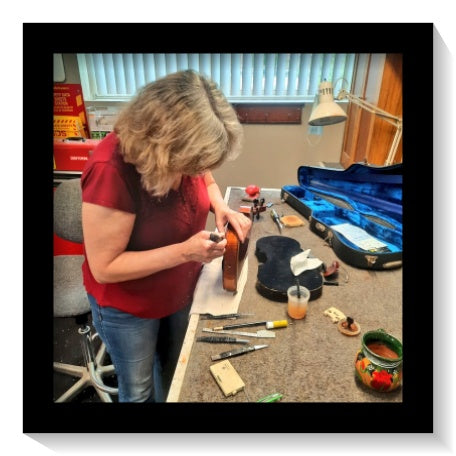
- Article published at:
- Article author: cassandra thuneman
- Article comments count: 0
Drawer menu
Throughout the year, I often meet with parents and students to discuss the importance of humidity for those who own string or woodwind instruments. Today, I would like to extend that conversation to our teachers and educators.
Wood is a porous material that is constantly changing, and both insufficient and excessive humidity can lead to various issues with your instruments. Because most school music programs own quite a few wooden instruments, teachers need to understand and maintain a properly humidified environment. The cost of the instruments or the type of wood used in their construction does not relieve the teacher or the school of the responsibility for proper care and maintenance.
A significant issue arises due to a lack of moisture, commonly occurring during winter when we turn on our furnaces. HVAC systems or furnaces take the moisture out of the air, decreasing humidity levels. This loss in humidity can negatively impact our musical instruments, resulting in cracks, open seams, and neck problems. A lack of moisture affects both old and new instruments. Newer instruments are often more susceptible to cracking because the wood is still in its shrinkage stage and has not yet stabilized. However, older instruments, particularly those with many repaired cracks, tend to suffer even more damage from changes in humidity.
I always say that if your nose and skin feel dry, it's time to increase the humidity in your environment. Listen to your body, and you'll be helping your instrument as well. Additionally, if you can maintain a humidity level between 35% and 50%, this will help reduce the growth of viruses and bacteria in the classroom. That's a bonus!
Wood is porous and hygroscopic, meaning it can absorb and release moisture. This characteristic causes wood to react to changes in its environment. For example, placing your instrument in a bathroom while taking a shower will cause it to absorb humidity and swell. Conversely, the wood will release moisture and shrink in a dry environment, such as a classroom or on stage.
How a tree is cut affects how the wood absorbs and releases moisture. When a maker constructs an instrument, they often cut the top and back plates quarter-sawn, as this provides the most dimensional stability. When the wood's moisture

content drops below 30%, the cell walls shrink and become narrower than before, resulting in noticeable shrinkage across the grain. Over time, you may observe the top shrinking to the point where your luthier must bring in the ribs to fit correctly.
String instruments are particularly susceptible to wood movement due to seasonal and atmospheric changes, which can create challenges for school music programs. To make things even more complicated, when makers build string instruments, they usually use soft spruce for the top and harder maple for the back and sides. These two types of wood expand and contract at different rates. Even the ebony saddle on the spruce top typically shrinks less in proportion, which is why many shops will kerf the saddle before selling the instrument. This practice helps reduce the risk of splits or cracks developing in the end grain or the bottom of the instrument, especially in newer models.
Every teacher who has a collection of fully carved or hybrid string instruments should consider purchasing two essential items: a hygrometer and a console humidifier. This is especially important if the school does not provide humidity control in the classroom. Additionally, there are other ways to mitigate the effects of excessive or insufficient humidity in the classroom.
 can significantly affect humidity levels throughout the day.
can significantly affect humidity levels throughout the day. instrument is in its case or gig bag. For larger storage areas or racks of instruments, a free-standing humidifier is recommended, especially in an orchestra room. Additionally, make sure not to let the tanks dry out during breaks. Thirteen-gallon humidifiers, like this Aircare Evaporative humidifier, can cover 3600 square feet and run up to 48 hours on one fill. That amount of area can cover the entire room! By using this type of humidifier in the classroom, you can maintain a steady humidity level, which can help you save money on repairs.
instrument is in its case or gig bag. For larger storage areas or racks of instruments, a free-standing humidifier is recommended, especially in an orchestra room. Additionally, make sure not to let the tanks dry out during breaks. Thirteen-gallon humidifiers, like this Aircare Evaporative humidifier, can cover 3600 square feet and run up to 48 hours on one fill. That amount of area can cover the entire room! By using this type of humidifier in the classroom, you can maintain a steady humidity level, which can help you save money on repairs.
The ideal environment for storing an instrument is consistent temperature and humidity. Maintaining a relative humidity level of 35-50% during storage, transport, and performance can help prevent cracks, warping, and other types of damage to your instrument. Monitoring humidity levels, allowing for gradual climate adjustments, and avoiding extreme conditions is essential. While your classroom may not achieve museum-like storage conditions for your instruments, you can still take significant steps to reduce humidity-related issues, as discussed.